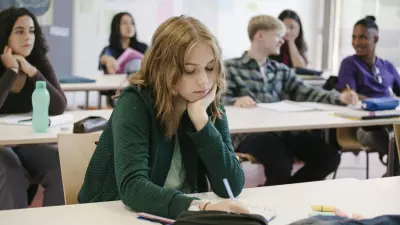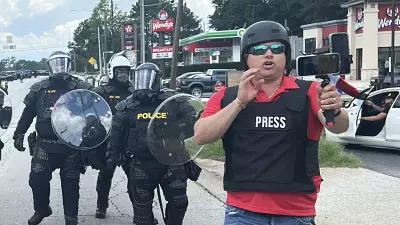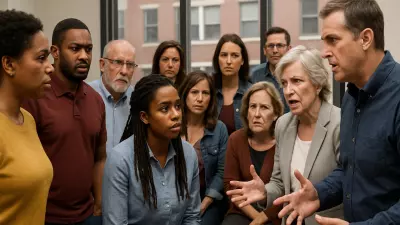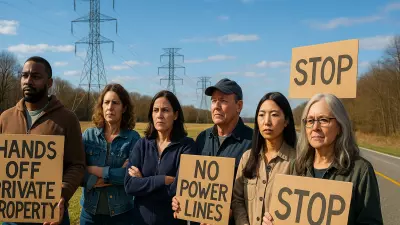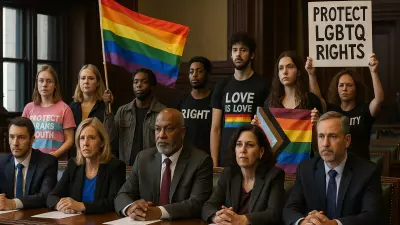As the presidential election inches closer, Ohio social studies and government teachers are using this as an opportunity to engage their students in civics education.

The Ohio Capital Journal talked to three current teachers — elementary, middle and high school — about how they are incorporating the presidential election into their curriculum.
“This is just another opportunity that only comes around once every four years,” Westerville South High School Government Teacher Kelley Stocker said. “The most rewarding part is knowing that I am helping to create a citizenry that understands how our country works.”
She typically tries to find current events that tie into what they are learning about in her class to help give real life examples to her students at the suburban high school just north of Columbus.
“You have to help them understand how government touches their lives and the real world applications,” said Stocker, who is in her 11th year teaching. “I just want them to start to understand why this stuff matters. I always tell them, you know, you can be anything you want to be in (her classroom), except apathetic or ignorant.”
Stocker rearranged her curriculum this semester to cover elections, campaigns, political parties and the First Amendment in a unit called “the role of the people.” Before she starts the unit, she sends letters home to the families to let them know she plans on covering the election in class and encourages parents to reach out if they have any questions.
One activity she has her students do is make a prediction map on 270 to Win.
“It’s like doing the (March Madness) brackets,” she said.
When talking politics in the classroom, Stocker has one boundary with her students — they can talk about issues, not people.
“You can say, I don’t agree with this position, not I don’t like these people,” she said. “I try to separate issues from people.”
Government is a high school graduation requirement in Ohio and Cleveland Teachers Union President Shari Obrenski previously taught high school government and history for more than 20 years.
“I always enjoyed seeing students at the beginning of an election cycle who have absolutely no interest in what’s going on that by the time we get to the presidential election, or a big election of some sort, be able to talk about platforms, be able to analyze commercials, be excited about the process and interested in how it was going to turn out,” she said.
Obrenski fondly looks back on her time in the classroom teaching the political process.
“We would talk about campaign commercials and the techniques that are used in campaign advertising, and having them take a look at different platforms from different political parties, having them analyze their own viewpoints, to see kind of where they line up ideologically with different political parties,” she said.
Some of Obrenski’s former students have reached back out to her and said they vote because of what they learned in her class.
“It reinforces that the work is important and reinforces that civic education is important,” Obrenski said.
James Lautzenheiser, an eighth grade history teacher at Crestview Middle School in Van Wert County in Northwest Ohio, said he views teaching how government works as an introduction to citizenship for his middle schoolers.
“I really like helping kids distinguish between what they think history and government is and helping them kind of figure out some things for themselves,” Lautzenheiser, who has been a teacher for 15 years, said.
Even though Angel Dyer Sanchez’s fifth grade students aren’t old enough to vote, she hopes what they talk about in class will lead to conversations about voting at the dinner table. The elementary school teacher in Columbus City Schools encourages her students to think for themselves when it comes to which candidate they want to win.
“Don’t just vote because it’s who your parents or grandparents are voting for,” she said. “You should have your own opinion. … You should know who you’re voting for and what they stand for.”
Voting
Stocker keeps voter registration forms, stamps, and envelopes in her classroom so students can come to her if they are ready to register to vote.
“The only thing they have to do by themselves is we have a mail drop box across the street, and they just have to walk it over,” Stocker said. Voting location. (Photo by the New Jersey Monitor/States Newsroom.)
In a similar vein, Obrenski helped eligible students register to vote and would teach a unit on voting and the country’s evolution of voting rights.
“Students are often really surprised to know that it’s only been 100 years since women have had the right to vote,” she said. “It’s inconceivable to them that that’s possible.”
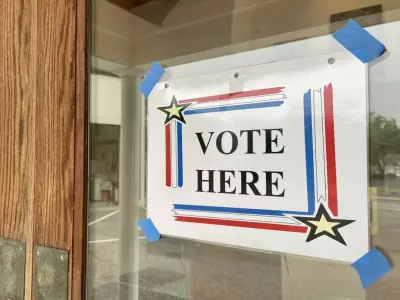
Sanchez, who is in her 20th year of teaching, gives lessons about voting and the three branches of government while encouraging her students to go to the voting polls with their parents.
“I just want to instill in them early that it is a right, and they need to make sure they take advantage of that right,” Sanchez said.
Lautzenheiser’s students are excited about the idea of voting.
“A lot of them have already expressed that it’s frustrating that their parents don’t always vote,” he said.
Only 32% of Ohio’s 18-year-olds are registered to vote as of May, according to the Civics Center, a nonpartisan organization trying to increase voter registration.
“When you look at the types of issues that are on the ballot with the candidates that we have on the ballot, young people are often more impacted by these decisions than other age groups, so it’s so important for them to see value in the process and to try to get them to go to the polls,” Obrenski said.
Teaching about the election doesn’t end once the votes are counted. Stocker plans on analyzing the outcome with her class to see how accurate the polls were.
“If they weren’t accurate how can we maybe explain that?” she said.
Teaching students media literacy goes hand-in-hand with teaching about the election.
“One of my personal goals is that I want them to be able to read the news and understand it,” Stocker said. “I’m teaching them all of the things that they need and the tools that they need to be able to think critically about the news, what they read, what they hear, and to be able to understand it.”
Sanchez said she teaches her fifth graders how to identify if a news outlet is a trustworthy site.
“Half the battle is, are you sure you’re getting truthful information?” she said.
Ohio Capital Journal is part of States Newsroom, a nonprofit news network supported by grants and a coalition of donors as a 501c(3) public charity. Ohio Capital Journal maintains editorial independence.

